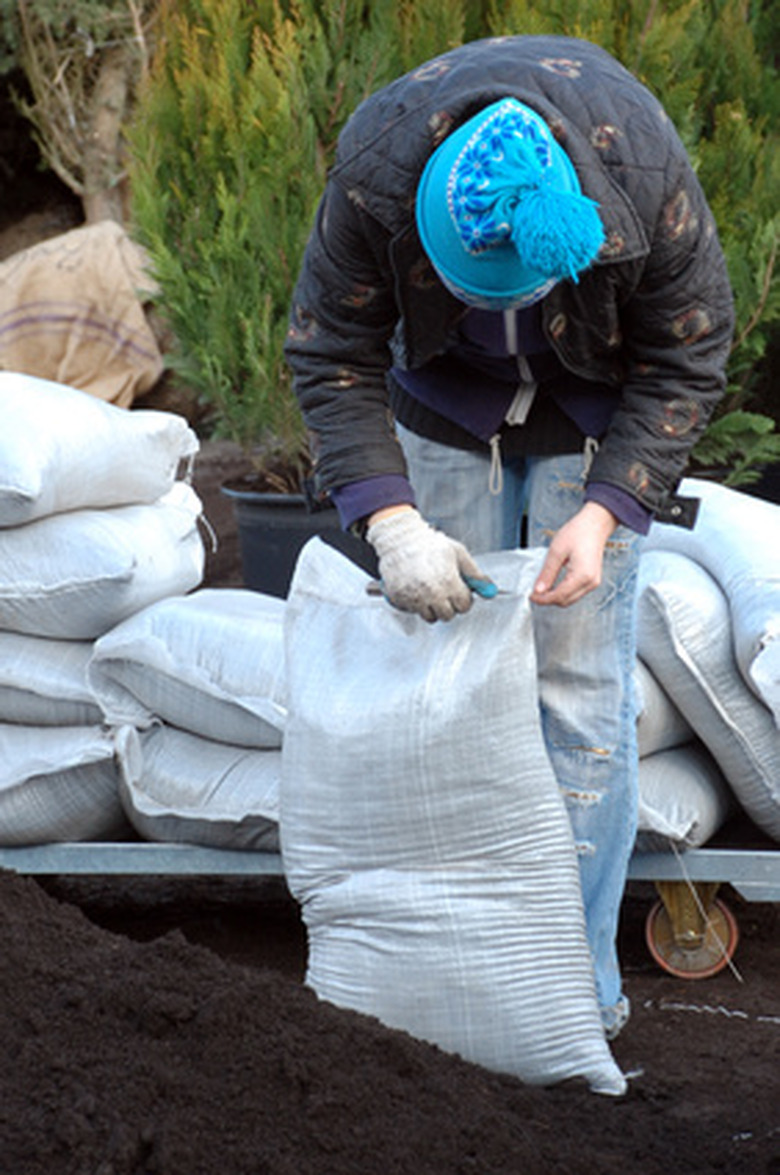Iron In Soils
Iron, chemical symbol Fe, is the fourth most abundant element available on Earth, according to the University of Wisconsin. Soils require iron for the synthesis of chlorophyll, and generally contain between 1 and 5 percent iron in their content. Most iron found in soil is found in iron oxides, silicate material and hydroxides.
Iron Reactions
Iron is found in soil in either its ferrous form (Fe++) or ferric form (Fe+++). When iron is ferric, the solubility of the compound decreases iron's availability to plants in the soil. The ferrous form is active and easily absorbed. Soil pH and aeration influence the availability of the iron.
- Iron, chemical symbol Fe, is the fourth most abundant element available on Earth, according to the University of Wisconsin.
- When iron is ferric, the solubility of the compound decreases iron's availability to plants in the soil.
pH
Iron availability in soil decreases as the pH of the soil increases. Iron deficiencies in plants tend to occur when the pH level is between 7.4 and 8.5, making the soil alkaline. Soil pH may be amended by the application of sulfur into the soil.
Aeration
Soil that is compacted and does not allow the easy movement of air and water through the soil is said to be poorly aerated. Iron deficiencies tend to occur in cool, wet soils. Heavy clay that is compacted tends to stay cooler and hold more water. When soil warms, microbial activity increases, allowing plants to absorb more iron. Some microbes will turn iron into the easily absorbable ferrous compounds.
- Iron availability in soil decreases as the pH of the soil increases.
- When soil warms, microbial activity increases, allowing plants to absorb more iron.
Iron Deficiency Symptoms
Deficiency symptoms first appear as yellowing in the terminal leaves of a plant, says Michigan State University. According to Colorado State University, this is due to a lack of chlorophyll in the plant. The plant leaf will turn yellow, but the veins of the leaf will remain green. Adding organic matter into the soil will increase iron's availability. Manure or acid peat are the most effective.
Fertilizer
Iron chelates in fertilizer will correct iron deficiency when added to soil. One pound of iron per acre is the recommended rate. An application of iron will only work if the soil is acidic in nature, so a pH test is required. High concentrations in acidic soil are common when iron is overapplied, and this is toxic to plants.
- Deficiency symptoms first appear as yellowing in the terminal leaves of a plant, says Michigan State University.
- An application of iron will only work if the soil is acidic in nature, so a pH test is required.
